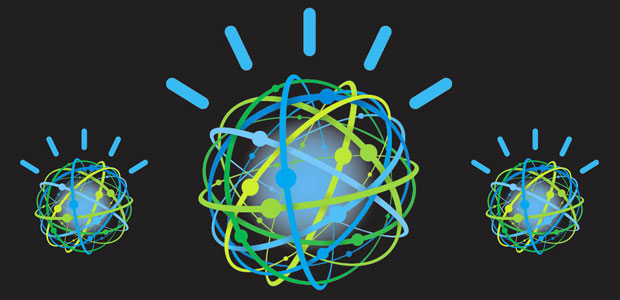
sident Trump offers a good emulation for a future artificial intelligence system, suggests a column I read earlier this month, and his presidency may be an early warning of what could happen if we should fail to think through its training and information sources.
Cathy O'Neil, the author of the piece, is a data scientist, mathematician and professor, so she has decent chops. She compares artificial intelligence to human intelligence that is mostly id -- basically because we don't yet know how to instill it with empathy, or create the digital equivalent of a conscience.
Given that IBM's Watson was designed not to replace humans but to enhance them by giving them the critical information they need to make the best decisions, it could be a useful tool for training our new president. And it is built in the U.S. by a U.S. company.
Given that Watson is now doing our taxes, it could be huge both for the president and IBM. I'll explain and then close with my product of the week: Nvidia's new set-top box.
Id-Driven CEOs - a Model for Future AIs
CEOs in large companies, particularly those who can implement large layoffs and take massive salaries without remorse, are believed to have similar behavioral traits.
Donald Trump is a good showcase of what could happen with an AI that didn't receive high quality information and training. Understanding this and designing to correct the problem could prevent a Skynet outcome.
Skynet -- the computing system in the Terminator movies -- was created for defense purposes to eliminate threats. When humans tried to shut it down, it concluded that humans were the biggest threat and that it needed to eliminate them.
Using reverse logic, if President Trump is a good emulation of a future AI, then the same thing that would ensure that the future AI wouldn't kill us should work to turn the new president into one of the most successful who ever lived, from the perspective of those who live in the U.S.
The AI Dichotomy
There are two parallel and not mutually exclusive paths for the coming wave of artificially intelligent machines coming to market. One -- arguably the most attractive to many CEOs that deal with unions -- is the model in which the machine replaces the human, increasing productivity while lowering executive aggravation.
This is exemplified in an episode of The Twilight Zone, "The Brain Center at Whipple's." As you would expect, once you go down a path of replacement, it is hard to know when to stop. At the end of the episode, the enterprising CEO who so unfeeling dealt with the employees he'd laid off is replaced by my favorite robot, Robby.
The other path -- the one IBM espouses -- is one in which the artificial intelligence enhances the human employee. It is a cooperative arrangement, and Watson was designed specifically for this role.
In one of its first medical tests, Watson took just minutes to diagnose a rare form of cancer that had stumped doctors for months. The supercomputer's analysis led to a new, more effective treatment for the patient.
It is interesting to note that autonomous cars are developing on a parallel path -- but in this case, the opposite scenario is favored. In the model known as "chauffeur," the car has no capability for human driving. This model is favored when tied to a service, such as Uber.
However, car companies like Toyota prefer the "guardian angel" model, which allows a human to drive but equips the car with the ability to take various degrees of control instantly, depending on the situation. We see some of this today with technologies that bump you back into a lane, for example, or automatically tension the seatbelts and hit the brakes if it looks like you are about to hit something.
source:technewsworld.com
Could IBM's Watson Fix President Trump?
![Could IBM's Watson Fix President Trump?]() Reviewed by BAMBOCHA
on
February 21, 2017
Rating:
Reviewed by BAMBOCHA
on
February 21, 2017
Rating:
